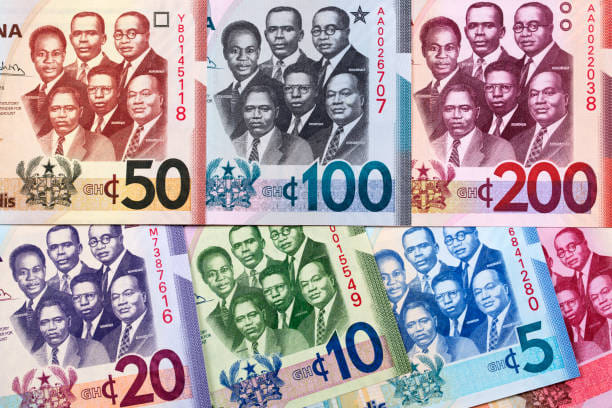Ghana’s local currency (Cedi) is 60 years and for these six decades, it has been the currency shaping the success or otherwise of Ghanaian businesses. It has strongly influenced everything from import bills to investment decisions, profit margins, household welfare and also long-term business planning.
While the celebration takes us back to the historical journey of the currency – talk of re-denomination, depreciation cycles and periods of resilience, I believe the most consequential development for the business community is not behind us, but ahead. I will explain why.
The commemoration does more than a honour to a national symbol. It raises a fundamental economic question. Which is, what the next frontier of the country’s currency should look like.
Ghana’s currency journey began shortly after independence when the country sought to break free from the British West African pound. In 1965, Ghana’s first President, Dr. Kwame Nkrumah introduced the first Ghana cedi. It replaced the colonial-era money and ushered the country into a new era of monetary identity. Since then, the Cedi has dictated the pulse of trade but also gone through a number of monetary cycles.
Historic patterns
Between 1965 and 1970, it enjoyed early stability backed by strong cocoa revenues. Unfortunately, it witnessed volatility and inflation in the late 1970s–1980s – a development that undermined business confidence. But there were quick structural adjustment reforms thereafter in 1983 which allowed competitive export pricing but pushed import costs sharply upward.
By the 1990s and early 2000s, the cedi had lost so much value that transactional convenience became a national issues. Businesses operated with bundles of notes for basic purchases with accounting systems becoming strained.
Then came that big one. The 2007 redenomination. The Bank of Ghana introduced the redenominated Ghana cedi (GH₵), removing four zeros from the old currency.
This reform was accompanied by a period of relative macroeconomic stability. For businesses, it simplified transactions. It made pricing clearer, and reduced the rising concerns about the plummeting value of the old cedi.
Again, COVID-19 brought unique challenges. Global supply-chain disruptions, lower foreign inflows and rising government spending triggered new depreciation pressures. By 2022, Ghana’s economic crisis driven largely by unsustainable debt levels caused the cedi to fall dramatically, at one point ranking among the world’s worst-performing currencies. For businesses, this period was devastating.
In all of this, the cedi comparatively remains significantly more volatile in terms of how it stacks up against its West African neighbours. Consider for instance, the CFA franc, whose fixed peg to the euro provides Côte d’Ivoire, Senegal and Benin with a more predictable business environment. That stability, however, comes at the cost of monetary independence and this is a trade-off Ghana has historically avoided in favour of policy flexibility.
Against the Nigerian naira, the cedi performs relatively better, even though both economies grapple with similar structural constraints such as high import dependence, fiscal imbalances and exposure to global commodity shocks.
Business consequence
The confidence and transactional confidence brought on by the redenomination did not last long. It left structural weaknesses – some that remain unresolved till date. Cast your mind back to the post-2010 era where commodity shocks, energy sector debts and high import dependency led to frequent depreciation cycles.
Manufacturers struggled with unpredictable import prices for raw materials. Retailers revised price tags weekly or daily. Businesses were reporting losses due to currency volatility. Investors hesitated. Banks tightened lending.
Even today, as the cedi shows impressive resilience having appreciated 32.2% against the dollar in the first 11 months of 2025; seasonal pressures continue to trigger volatility. The currency, for instance, weakened to GH¢11.13 per dollar by November 21, a common pattern fuelled by year-end import demand.
What does this tell us? The stability or instability of the Cedi has far-reaching effects on the economy. Frequent depreciation erodes consumer purchasing power. It suppresses demand and forces businesses to implement cost-cutting measures to hedge risks. In worst cases, some businesses even relocate supply chains. For an import-dependent economy like ours, each currency swing raises operational costs and drives inflation. While a weaker cedi can improve export competitiveness for Ghana’s limited export base of primarily cocoa, gold and oil, it doesn’t do much.
Would you not just agree if I say currency stability is the single most important determinant of Ghana’s business environment?
E-cedi a game-changer?
Now, to why I believe the most consequential development for the business community is ahead and not behind and what the next frontier of the country’s currency should look like. If you put all of the above together, the cedi’s 60-year journey is a mixed performance. But the introduction of the eCedi could become the most transformative chapter. It is not simply because it is digital, but because it directly addresses long-standing issues of payment efficiency and trade reliability.
Recently, at the Cedi@60 International Currency Conference, the Bank of Ghana hinted that the future of the country’s currency is digital. Ghana is well-positioned for a central bank digital currency (CBDC), on the back of robust digital infrastructure.
What sets Ghana apart? Ghana has the digital rails needed for a CBDC – systems many African countries are still building: The National biometric ID system, digital property addressing system, complete payment interoperability just to mention but a few. These elements make Ghana one of the most prepared countries globally not just in Africa to introduce a digital currency without major friction.
